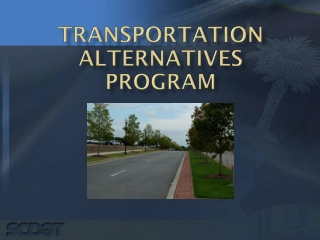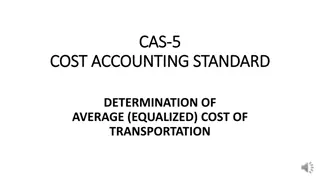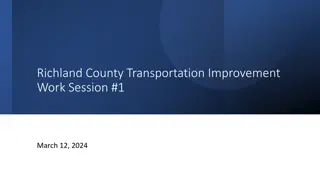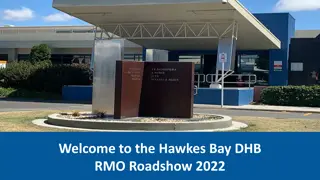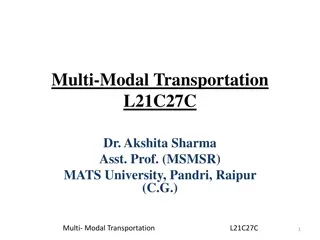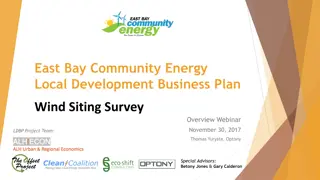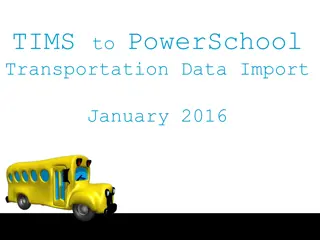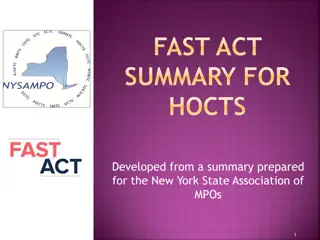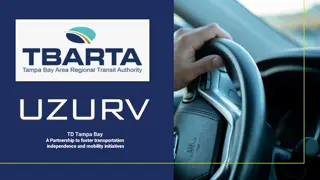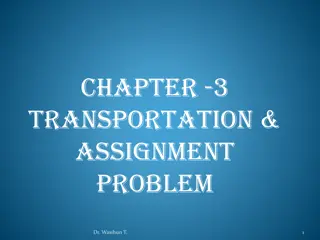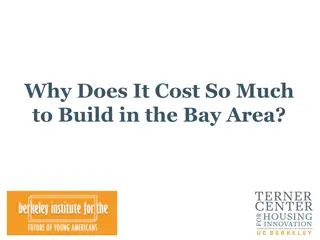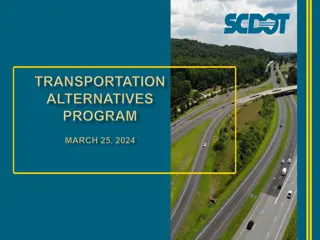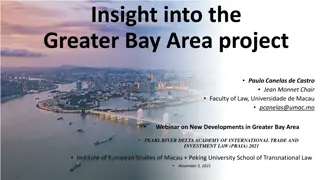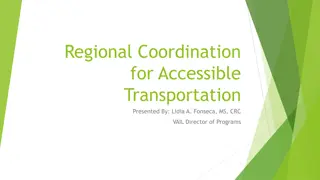FASTER Bay Area: A Vision for Seamless Transportation
The Bay Area faces transportation challenges in the midst of a thriving economy. Residents seek a reliable, modern transit system that enhances mobility and connectivity. With a focus on freedom, affordability, speed, transparency, equity, and reliability, the FASTER principles aim to address these issues and pave the way for a regional transit solution. Leadership envisions a seamless system integrating various modes of transport to benefit all residents. Public support and the identification of key priorities underscore the need for transformative changes in the Bay Area's transportation infrastructure.
Download Presentation

Please find below an Image/Link to download the presentation.
The content on the website is provided AS IS for your information and personal use only. It may not be sold, licensed, or shared on other websites without obtaining consent from the author. Download presentation by click this link. If you encounter any issues during the download, it is possible that the publisher has removed the file from their server.
E N D
Presentation Transcript
A FASTER Bay Area A Seamless Transportation System Based On: Freedom Affordability Speed Transparency Equity Reliability 1
The Bay Area Today The Bay Area is home to one of the most dynamic economies in the world. However, the region's infrastructure is based on pre-1960's models unable to keep pace w/ population & economic growth. Commute times are crippling the Bay Area economy and productivity, causing residents to lose 116 hours annually to their commute. 2
Key Public Opinion Research Findings Residents recognize the transportation challenges facing the region Voters are seeking a modern, reliable, and accessible transit system that connects the Bay Area Conceptual willingness to raise taxes for transportation investments is above two- thirds Differences in support between funding mechanisms are slight, and within the margin of error A regional measure is viable in the right environment; however, organized and funded opposition will likely result in defeat 3
FASTER Principles Prioritize the development and implementation of a true regional transit system Provide freedom of access, mobility, and a true alternative to driving alone Solve for existing barriers - including affordability, speed, reliability, and ability to access the system Support economic development: transit allows new areas for housing and business development throughout the 9 counties Reduce climate emissions and adapt to a changing environment 4
Leadership Group Vision Bay Area residents deserve a world-class, integrated, seamless transit system that connects and extends BART, Caltrain, the Altamont Commuter Express, SF Muni, VTA Light Rail, SMART, Amtrak, the Capitol Corridors, Ferries, Bikes and buses; to provide reliable, safe and efficient service for those who are transit dependent, and compelling enough to lure those of us who are current car commuters out of our automobiles. 5
Outreach Touch Points Recurring Meetings Operators and County Transportation Agencies MTC Local Transportation Leaders and Stakeholders Business Leaders Equity and Transit Coalition Labor Environmental Groups Public Outreach Outreach forums in fall 2019 Board presentations Survey 6
Feedback from Outreach to Date Focus on transit Walk and bicycle access Integrate public transit system into one fast, user-friendly system Use emerging mobilities to provide flexible transportation Funding for climate adaptation Regional express buses running on fast express lanes Discount fares 7
Funding Mechanism Based on our research, the One Cent Sales Tax generated substantial funding, has the flexibility to fund operations, is politically viable, and is a funding source that has historically garnered broad support for transportation investments in the Bay Area. It is expected to generate $100.6 billion over 40 years. 8
Funding Mechanism Pros Use of proceeds are not restricted and straightforward tax that voters understand The revenue is sufficient to fund a long-term strategic plan for capital improvements and operating budgets Bay Area employers contribute significantly in sales tax, with more than 35 percent of sales tax paid by businesses (roughly $550 million annually from this measure) Sales taxes are not paid on three big expenses: housing, health care and groceries Cons Regressive Other sales taxes may go to the same ballot, though it is not clear what the impact would be 9
Process 10
Next Steps Exploring rebates, affordable fares, and other options to address regressivity Defining longer-term vision as well as key projects that are shovel ready Can you help us? We are looking for support with projects, programmatic ideas, and/or FASTER outreach? Info@FASTERBayArea.org 11


